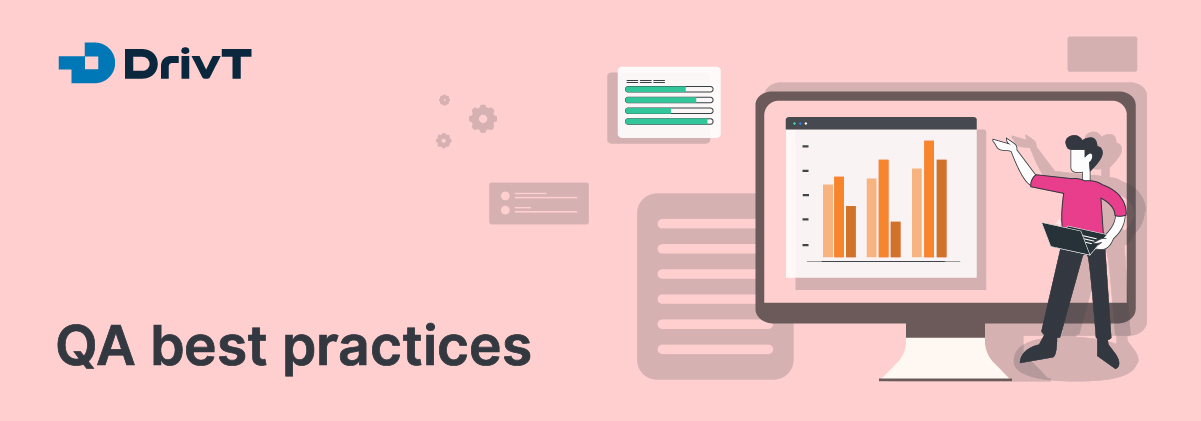Software testing is a process of constant improvements, where creating a well-functioning release product requires tense sync of development, QA, and product teams. We will share with you what validation testing is, why it is crucial to perform it and how to do that.
What is validation testing?
Validation testing is usually performed at user acceptance testing where developers can understand better if the release product suits the requirements and expectations of the customer according to the requirements specifications.
You should perform validation testing at the high-level testing stages only: there is no need to check modules and low-level components as it won’t give you the correct picture of the programming. Sometimes validation testing can be mistaken for verification testing, let’s take a look at their differences.
Verification testing makes sure that the teams deliver all the correct product functionality to the end user.
Key Differences of Verification vs Validation
| Verification | Validation |
| The QA engineer checks the documents, design, code. | The combination of UAT and verification testing. |
| Uses methods like reviews, walkthroughs, inspections, and desk-checking. | Includes Black Box Testing, White Box Testing, & non-functional testing. |
| Whether the software conforms to specification is checked | It checks whether the software meets the requirements and expectations of a customer |
| It finds bugs early in the development cycle. | It can find bugs that the verification process can not get. |
| Verifies the architecture, specification, complete design, high level, and database design. | Validates the product. |
| It comes before validation. | It comes after verification. |
- When to perform validation testing?
It is a misunderstanding to consider that validation testing is executed after the verification testing only. You can validate your product after integration testing and stress testing, which are completely different product development stages.
Why perform validation testing?
There are pros and cons of validation testing we cannot omit – they are pretty crucial to know about.
Pros of validation testing
- This type of testing shows the majority of development inconsistencies and identifies them after they fail verification testing;
- Validation testing draws a line between the expected result and the actual result of the performance;
- Validation testing helps marketing and development teams to work in sync while creating a flawless release product for end-users.
Cons of validation testing
- It is a time-consuming & pricey testing process. The validation testing requires several team members; it is applied at different development stages and repeated till the release product follows the customer’s expectations;
- Validation testing cannot be executed at the start of the development. You can’t find errors and fix the bugs of the low-level software components;
How to perform validation testing?
#1 Prepare a detailed plan
Every single test starts from the validation test plan. The plan should answer the question of who, what, where. Don’t forget to include in your plan:
- description;
- specifications;
- assumptions & limitations;
- testing & acceptance criteria;
- team with the responsibilities of each teammate required procedures & documentation.
You will need all this information to be stored reasonably within the best QA tool to make sure your performance is efficient.
#2 Work on the requirements
You need to know what you expect the product to do to write down the requirements. You can separate the validation testing requirements into two categories: functional and infrastructural.
The first category includes security, interfaces, system risk analysis, and some more functions. In contrast, the infrastructural ones speak about the team, tools, and environment that the QA engineers will need to perform the validation testing successfully.
#3 Test protocol & specifications
The QA managers have to write test cases to be prepared for every case output. Also, the inputs should be written in the test specifications. You cannot overestimate the importance of determining the possible bugs in output of the test cases, so be prepared! You also have to create the traceability matrix at this step to monitor the steps of the testing process and correct the overall process of software validation.
#4 Testing process
The QA engineers execute test cases according to the test plan. Validation testing is focused on the inputs and the outputs of the software, rather than on the code itself. All the bugs have to be recorded and assigned to the developers, who can fix them.
#5 Revision & report stage
The QA engineer creates a final report based on the executed test cases. It should include user training, security breaches, backup & recovery plans. You can also include various items in the final report: the anomalies of the test and successful test cases.
To sum it up
The key to a successful validation test is following the right test steps and know the customers’ requirements and expectations. Remember, it’s not just about checking the functionality of the software – validation testing helps build customer loyalty by allowing them to get the software of their dreams. So, don’t fail on the end-user and do the testing!








Be the first to leave your comment...